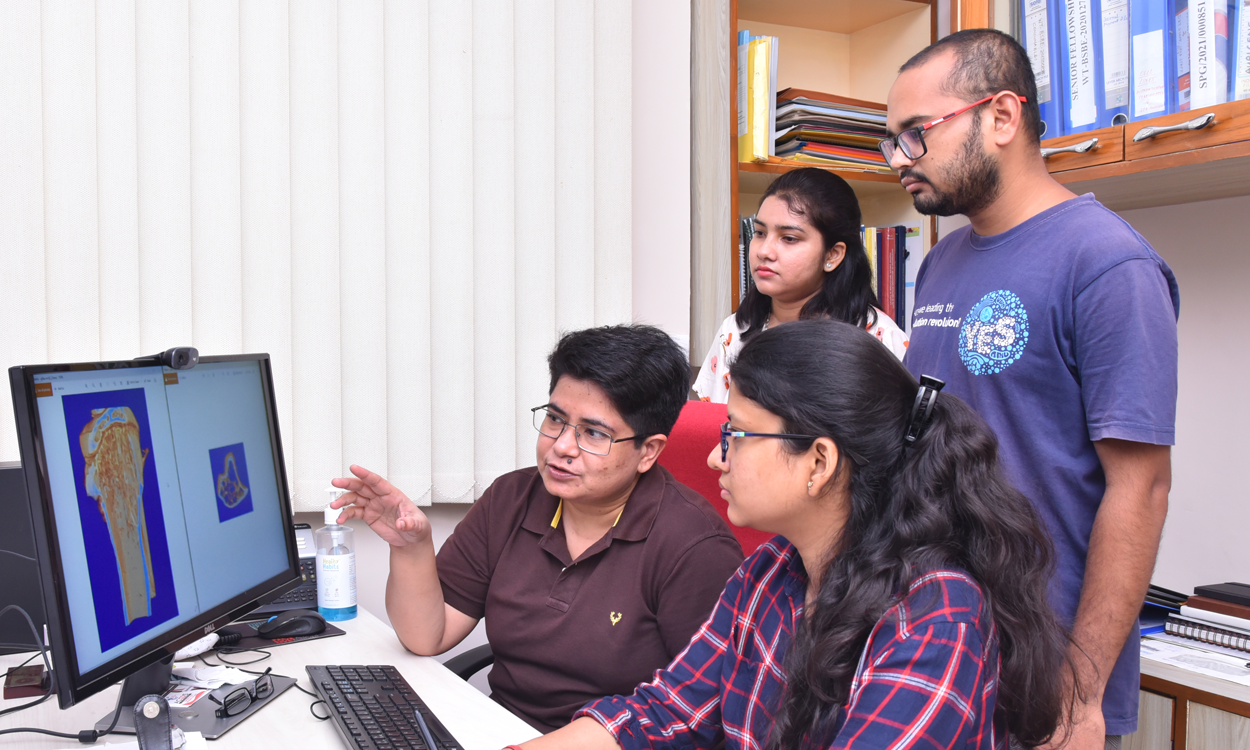
While many factors, such as signalling molecules and pathways, overall lifestyle and genetics ultimately play a role for healthy life, the genes involved in development have been highlighted to control the biological processes involved in the advancement of cancer. Among these, one gene family is homeobox-containing family of transcription factors (TFs), which regulates the growth and developmental processes during embryogenesis. Distal less homeobox 1 (DLX1), a member of homeobox family, has been linked with prostate cancer, however its exact role in prostate cancer progression was unexplored.
To learn more about oncogenic role of DLX1 and its connection with prostate cancer, SciSoup spoke with study leader Bushra Ateeq and first author Sakshi Goel about their recent research findings published in the journal Nature Communications.
SEP 12, 2021 | BY RATNESHWAR THAKUR
In the SciSoup interview series “Unfolding Science With SciSoup”, the authors explain the key findings of this study, significance of their new results and its benefits for public. Also, don’t miss here listening podcast by Ms. Sakshi Goel.
What inspired you for this study?
Our group has been extensively working on the forefronts of prostate cancer especially in Indian context. We performed the first comprehensive molecular subtyping of Indian prostate cancer patients, and discovered that majority of these patients (~50%) harbour TMPRSS2-ERG gene fusion. Besides pathological assessment, molecular subtyping has a huge potential in meaningful cancer diagnoses, tailored treatment and better disease management.
Hence the question remains, what are the other molecular subtypes, whether we could harness any of these for therapeutic targeting. Although, DLX1 has been employed as a urine-based diagnostic marker, it’s exact role in prostate cancer pathobiology and disease advancement was unknown. Besides, Homeodomain proteins are known to regulate several biological events at the time of embryonic development. So, these research gaps motivated us to investigate the in-depth role of DLX1 in prostate cancer tumorigenesis, metastases or spread of cancer to distant organs, and to explore its utility as a drug target.
What is the main finding from your research?
We found about ~60% of the prostate cancer patients harbour high levels of DLX1 protein, which drives tumor progression, and facilitates metastases to bones and other organs. Importantly, we show inhibitors against a protein, namely Bromodomain and extra terminal (BET) and anti-androgen drugs would be efficacious for prostate cancer patients having high levels of DLX1.
How would you explain your research findings and its significance?
We have shown the importance of DLX1 in tumorigenesis and metastases to different organs including bones in prostate cancer. Our findings demonstrate that ablating DLX1 levels in prostate cancer cells led to reduced oncogenic properties, such as proliferation, migration, metastasis and cancer stemness. Further, when we implanted DLX1-high or DLX1 ablated prostate cancer cells in immunodeficient mice, we observed reduced tumor growth and metastases in the mice implanted with DLX1 ablated cells. More so, in the bone metastases mice model, micro-Computerized tomography (micro-CT) scan data indicates that the tibia of the mice implanted with DLX1 ablated prostate cancer cells show less damage to the bone architecture, while control mice implanted with DLX1-high prostate cancer cells exhibit more damage to the bone.
About ~50% of prostate cancer patients have TMPRSS2–ERG gene fusion, which is considered an early event. Interestingly, we found that ~96% of TMPRSS2-ERG fusion-positive, and ~70% of androgen receptor (AR)-positive patients show high levels of DLX1. We also deciphered that ERG (produced as result of TMPRSS2-ERG gene fusion) and AR binds onto the regulatory regions of DLX1 resulting in the transcriptional activation of DLX1, leading to its higher levels in prostate cancer.
BET proteins are known to facilitate AR and ERG mediated transcriptional regulation, thus we examined the effect of small molecule inhibitors against BET proteins in managing DLX1-mediated prostate cancer. Interestingly, we found that BET inhibitor either alone or in combination with anti-androgen drugs resulted in decreased expression of DLX1 and its downstream target genes. Likewise, in our preclinical mice model studies, we showed that administering either BET inhibitor alone or in combination with anti-androgen drugs result in about ~70% reduction in tumor burden accompanied with diminished metastases to distant organs.
Share with us why is this study interesting?
So far DLX1 was only exploited as a urine-based diagnostic marker for prostate cancer patients. We have shown that ~60% of both advanced stage, and castration resistant prostate cancer patients have elevated levels of DLX1, which is higher than the occurrence of TMPRSS2-ERG fusion. Also, establishing oncogenic role of DLX1 in prostate cancer pathobiology, by identifying ERG and AR as its transcriptional regulators, and showing the utility of BET inhibitors and anti-androgen drugs for managing the DLX1-mediated tumorigenesis makes this study exciting.
How will this research be useful to the public?
We have shown that DLX1 is present in a large subset of prostate cancer patients both in organ confined disease as well as in metastatic cases. Importantly, there are several commercially available urine-based diagnostics tests for detecting DLX1 mRNA levels; therefore, it is relatively easy to categorize prostate cancer patients who could respond to BET inhibitors either as a single agent or as an adjuvant therapy. Hence, this study would be immensely useful for better disease management for prostate cancer patients with higher DLX1 levels irrespective of TMPRSS2-ERG fusion status.
Bushra Ateeq, Associate Professor and Senior Fellow, India Allaince; and Sakshi Goel, PhD student from IITKanpur were interviewed by Ratneshwar Thakur, Science Communicator and Writer for SciSoup – A Science and Technology blog.
Journal Reference:
Transcriptional network involving ERG and AR orchestrates Distal-less homeobox-1 mediated prostate cancer progression
Disclaimer:
SciSoup claims no competing interest.
